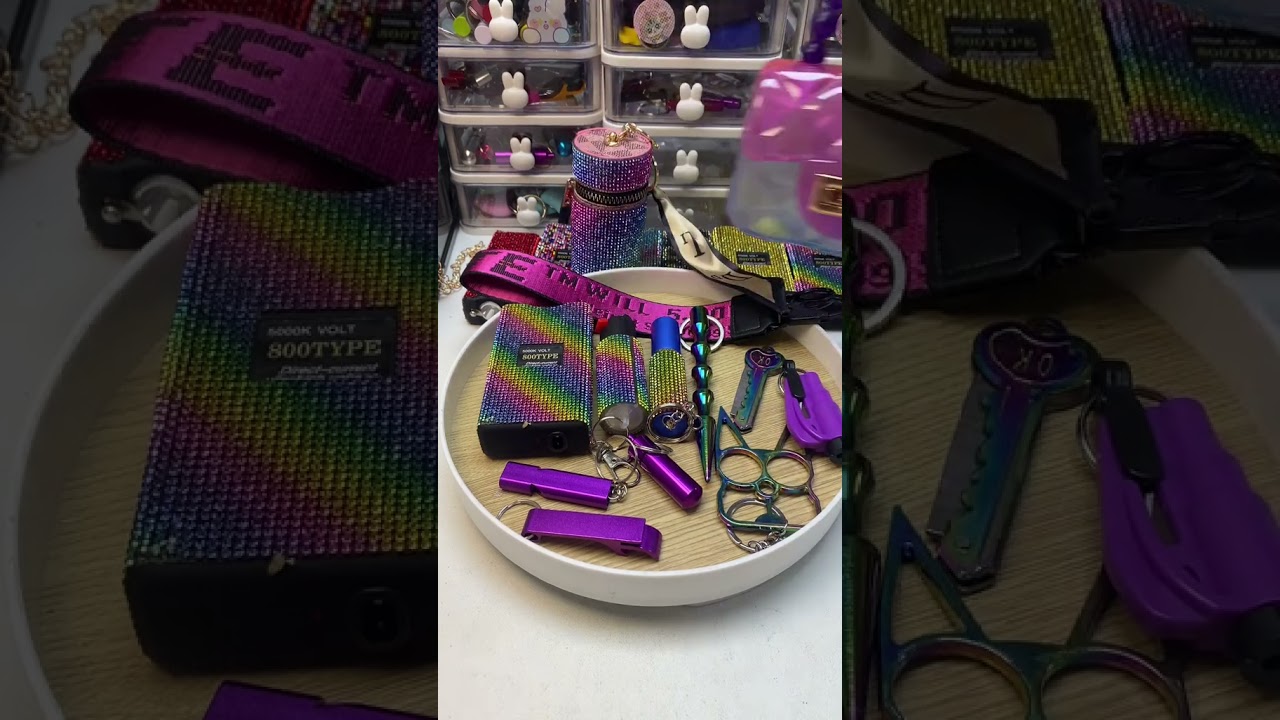Womens Preparedness
How Psychological First-Aid Can Help Victims of Natural Disasters

How Psychological First Aid Can Help Victims of Natural Disasters
Hello, ladies! It’s an honor to discuss a topic that affects so many of us, especially in these uncertain times. As someone deeply invested in women’s self-defense, personal safety, and general preparedness, I believe that physical preparedness goes hand-in-hand with mental resilience. Today, let’s delve into how Psychological First Aid (PFA) can be a game-changer for those affected by natural disasters.
Understanding Psychological First Aid
Psychological First Aid is a supportive and practical approach aimed at helping individuals cope with the immediate aftermath of traumatic events, including natural disasters like hurricanes, earthquakes, and wildfires. Rather than being a form of therapy, PFA is designed to help those in distress feel safe, stabilize their emotional state, and connect them with support services.
Key Principles of Psychological First Aid
-
Safety and Comfort: The first step in providing PFA is ensuring that the individual feels safe. For those impacted by a natural disaster, this might mean finding a temporary shelter, but it also involves creating a calming environment where they can begin to process what has happened.
-
Listening: Often, the most helpful thing we can do is to lend a listening ear. Encourage people to express their feelings and thoughts about the traumatic experience. For instance, the story of Laura, a mother from Louisiana who lost her home to Hurricane Katrina, highlights the power of connection. By sharing her story with support groups, she not only found solace but also discovered others who had experienced similar losses.
-
Providing Support: Help individuals connect to resources such as professional counseling, community programs, or even volunteers who can assist them. After the 2011 Joplin tornado, many women formed grassroots support networks to help each other rebuild not just homes, but their lives.
-
Encouraging Self-Care: Remind victims to prioritize self-care and maintain a routine. Simple actions like taking a walk, journaling, or practicing mindful breathing can greatly enhance emotional resilience.
- Empowerment through Information: As we prepare for potential disasters, knowledge is our best ally. Share tips on how to create a disaster plan, gather emergency supplies, and familiarize oneself with local resources. Being well-informed helps alleviate the panic associated with uncertainty.
Real-Life Application: Hurricane Harvey
In 2017, Hurricane Harvey devastated countless communities in Texas. In the wake of this disaster, many local organizations mobilized to provide Psychological First Aid to victims. Trained volunteers visited shelters, offering support and guidance. They helped women like Maria, who had lost everything and felt completely overwhelmed. Through casual conversations, volunteers could help her identify immediate needs and connect her to resources, transforming her sense of despair into hope.
Cultural Sensitivity in PFA
It is also crucial to consider cultural backgrounds when providing PFA. Each individual’s experiences and beliefs play a significant role in their responses to trauma. Tailoring your approach to accommodate these differences can encourage better communication and support. For example, some cultures may prefer community-based healing practices or family involvement, while others might value one-on-one support.
Preparing Yourself to Provide PFA
As women, we often find ourselves in caregiver roles, whether it’s with children, friends, or family. Here are a few ways you can prepare yourself to offer PFA:
-
Take a Training Course: Consider enrolling in a PFA training program. Many organizations, like the National Child Traumatic Stress Network, offer free courses that provide valuable skills you can use when disasters strike.
-
Learn About the Impact of Trauma: Understanding the effects of trauma on mental health can help you better empathize with someone in distress. Books, podcasts, and workshops can all provide insight into this subject.
- Practice Self-Reflection: Before stepping into a support role, check in with your own emotional state. It’s essential to be grounded in your own experiences so that you can be fully present for others.
Final Thoughts
In the spirit of resilience, let’s remember that while natural disasters can be destructive, our strength as women can shine even in the darkest times. Psychological First Aid empowers not just the recipients but also the givers. It reinforces the vital connections that exist within our communities, especially among women.
Stay prepared, stay informed, and know that you have both the power and the capacity to help those around you navigate through tough times. Together, we can cultivate a nurturing and supportive environment for all.
Take care, and remember: you are not alone. Your strength and compassion can make a world of difference. Let’s be each other’s support system, prepare ourselves, and face the challenges that come our way with resilience and hope. 💪❤️
Womens Preparedness
Do You Like Purple? #safteytips #preparedness #girl #asmr #besafe #protection #securekeys #safety

Purple Keychain Set With Rainbow Waves! versatile safety gadget. UBS charger and a safety tool.
source
Womens Preparedness
Solo Hiking: How to Stay Safe in the Great Outdoors

Hello, adventurous souls! I’m Jade Tripp, and I love the great outdoors just as much as you do. There’s something so liberating about hitting the trails solo, relishing the fresh air, and soaking up the beauty of nature. But with freedom comes responsibility, and it’s crucial to prioritize your safety while hiking alone. Here are essential tips to help you stay safe on your solo hiking adventures.
1. Plan Ahead
Before you step onto the trail, research your destination. Websites like AllTrails and the Hiking Project provide detailed trail maps, difficulty levels, and conditions. You can also check social media groups for recent trail conditions from fellow hikers.
Example:
Jane, an avid hiker from Colorado, always checks the weather and trail conditions before she heads out. On her last solo hike, she learned via social media that a particular trail was washed out due to recent rains. Instead, she chose a different, well-maintained trail and had an incredible experience without any hiccups!
2. Share Your Itinerary
Always let someone know your hiking plans. Share your starting point, estimated route, and expected return time. This is crucial if something goes awry.
Example:
Sarah, a single mom from Oregon, makes it a habit to text her sister with her location and a rough timeline every time she heads out. One day, when her vehicle wouldn’t start, her sister realized she was overdue and contacted local authorities. Thanks to their efforts, they located Sarah and ensured she was safe!
3. Gear Up Properly
Your gear can make all the difference. Invest in a good pair of hiking boots, weather-appropriate clothing, and a reliable backpack. Always carry emergency supplies, including:
- First-aid kit: Little injuries can happen, and being prepared is essential.
- A whistle: If you get lost or need help, a whistle can carry much further than your voice.
- A multitool: For any unexpected challenges you might encounter.
Example:
Lisa from Maine once saved the day with her trusty multitool. While hiking, she noticed a fellow hiker with a significant blister. Lisa was able to help her friend with some first-aid supplies and then used her multitool to fix a loose strap on her backpack. Always be prepared!
4. Trust Your Instincts
Your intuition is one of your best defenses. If you feel uneasy about a situation or an individual, trust your gut. It’s perfectly okay to turn around or move to a different area.
Example:
During a solo hike, Emily felt uncomfortable when a group of aggressive-looking men approached her. Instead of battling fear, she calmly turned around and walked in the opposite direction, choosing to find a safer part of the trail. Knowing when to change course can protect you.
5. Stay Aware of Your Surroundings
Be sure to remain vigilant while hiking. Pay attention to your environment, and keep an eye out for any wildlife, trail markers, or other hikers.
Highlight:
While hiking in Yosemite National Park, I spotted a mother bear and her cub. Instead of panicking, I quietly backed away, giving them the space they needed. Awareness is key!
6. Stay Connected
Consider using apps that can share your GPS location with friends or family. Many apps allow others to track your journey in real-time, providing added safety and peace of mind.
Example:
Rachel, a tech-savvy hiker from Texas, often uses the app ‘Glympse’ to share her hiking routes with friends. If she deviates from her plan, others can notice and check on her.
7. Know Your Limits
While pushing boundaries can be rewarding, it’s essential to recognize your fitness level and experience. Start with easier trails and gradually work up to more challenging hikes as you build confidence and skill.
Example:
When starting out, Karen stuck to shorter, easier hikes. Over a couple of years, her confidence bloomed, and she tackled more challenging terrains—and she did it all solo! Each hike made her feel empowered.
8. Emergency Plans
Have a plan in case of emergencies. Familiarize yourself with the basics of wilderness first aid and have a clear strategy for what to do if you get lost or encounter wildlife.
Highlight:
In 2021, a woman named Mia got lost during a solo hike in Utah. Thanks to her knowledge of the area and a clear emergency plan, she was able to find shelter and signal for help while waiting for rescue teams to locate her.
9. Enjoy the Journey
Lastly, remember that hiking is about enjoying nature and rejuvenating your spirit. When you prioritize safety and preparedness, you allow yourself to fully embrace the beauty around you.
So there you have it! With just a little preparation and awareness, you can enjoy solo hikes with confidence. The great outdoors is waiting for you, and there’s nothing like the invigorating feeling of exploring it on your own. Stay safe, keep smiling, and happy hiking! 🌲✨
Womens Preparedness
Sisterhood in Survival: How Female Bonds Help Women Overcome Adversity

Sisterhood in Survival: How Female Bonds Help Women Overcome Adversity
Hello, lovely ladies! I’m Jade Tripp, and today, I want to talk about a powerful and often underestimated force in our lives: sisterhood. In times of adversity and crisis, the bonds we share with other women can be our greatest source of strength. From urban jungles to the wild outdoors, let’s explore how nurturing our connections can empower us to face challenges head-on.
The Power of Sisterhood
Sisterhood is more than just shared experiences; it’s a deep-rooted sense of community, trust, and support. This bond can be crucial during difficult times, providing emotional and physical security. In a world where women often face unique challenges—be it safety concerns, workplace discrimination, or even societal pressures—having a network of strong, supportive women can bolster our resilience.
Real-Life Examples of Female Empowerment
-
The Women of The Survivor’s Network
In 2015, when wildfires ravaged parts of California, a group of women leaders called The Survivor’s Network came together. They organized efforts to evacuate those in danger and provided shelter and resources to other women who had lost their homes. Their collective strength helped countless families rebuild, proving that when women unite, they can create substantial change.
- Sister Rescues
Then there are stories like that of British adventurer Jessica Watson, who, at 16, became the youngest person to sail around the world solo. Yet, during storms, it was the love and encouragement from her female friends and family that kept her spirits high. They would send letters and messages, reminding her that she wasn’t alone, and this sisterly support gave her the strength to persevere.
Emotional and Psychological Benefits
In our everyday lives, emotional support is crucial. Connection with other women can be a lifeline during difficult times. Studies show that women often cope with stress differently than men, seeking comfort in social connections. Having a sisterhood not only helps in sharing burdens but also encourages resilience. Whether it’s through a chat over coffee or training together in self-defense classes, these friendships are pivotal for mental well-being.
Building a Strong Support Network
-
Join Female-Focused Self-Defense Classes
Gather your friends or find a local group. Not only will you learn crucial skills for personal safety, but you’ll also forge stronger bonds through the shared challenge. Organizations like Girls on Guard offer classes focusing on practical self-defense tactics specifically designed for women.
-
Create a ‘Sisterhood Survival Group’
In times of uncertainty, such as natural disasters or other emergencies, forming a group with your friends can be empowering. Use this collective to brainstorm strategies for preparedness: share resources such as first-aid kits, create a communication plan, and even practice group drills. Think about a local community like Sisterhood of Survivors, which focuses on building preparedness skills among women.
- Support One Another in Tough Times
Remember the tale of Ruth Bader Ginsburg and her close friendship with fellow Supreme Court Justice Sandra Day O’Connor? They often leaned on each other for support throughout their careers. In the same way, don’t hesitate to reach out to your friends in times of need—whether it’s emotional support or assistance during a crisis, connection is key.
Believing in Each Other
Empowering each other is vital. Celebrate each other’s victories, no matter how big or small. Whether it’s finishing a self-defense course or launching a small business, positive reinforcement can reinforce the idea that we are better together. Utilize platforms like social media to champion other women and their achievements; this can create ripples of encouragement that transcend beyond borders.
The Ripple Effect
Sisterhood extends beyond immediate friends; it’s a ripple effect that can reach families, communities, and even future generations. Teach your daughters the importance of strong, supportive female friendships. Encourage them to lift other women and to seek help when needed. These lessons will follow them throughout their lives.
Conclusion: Embrace Your Sisterhood
When we support each other, there’s nothing we can’t overcome. From the individual to the global scale, female solidarity can usher in change, resilience, and strength. Sisterhood isn’t just about having friends; it’s about fostering a culture of support, empowerment, and preparedness.
So, let’s strengthen our bonds, share our stories, and uplift one another in times of need. Remember, you are never alone in this journey. Together, we thrive, we survive, and we succeed!
With much love and encouragement,
Jade Tripp 🌸
-

 Womens Self Defense10 months ago
Womens Self Defense10 months agoNew Legislation Empowers Women to Defend Themselves
-

 Self Defense News1 year ago
Self Defense News1 year agoShe was convicted of killing her abusive boyfriend. Now a Maple Grove woman is home awaiting a new trial.
-

 Self Defense News1 year ago
Self Defense News1 year agoSelf-Defense for All: The new Gracie Jiu-Jitsu Pasadena is for everyone | Online Features
-

 Womens Self Defense1 year ago
Womens Self Defense1 year agoTop 5 Self-Defense Techniques Every Woman Should Know
-

 Womens Fitness1 year ago
Womens Fitness1 year agoXtreme Bodyweight HIIT (Lots of Jumping!) | Joanna Soh (Fio Series)
-

 Womens Self Defense7 months ago
Womens Self Defense7 months agoUnderstanding State-by-State Variation in Self Defense Laws
-

 Womens Preparedness1 year ago
Womens Preparedness1 year ago10 essential skills for surviving in the great outdoors
-

 Womens Preparedness1 year ago
Womens Preparedness1 year agoEmpower Yourself: A Guide to Female Survival Planning



